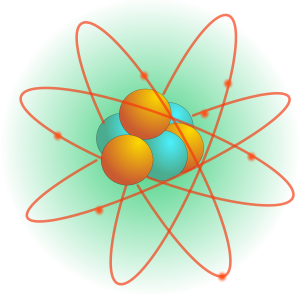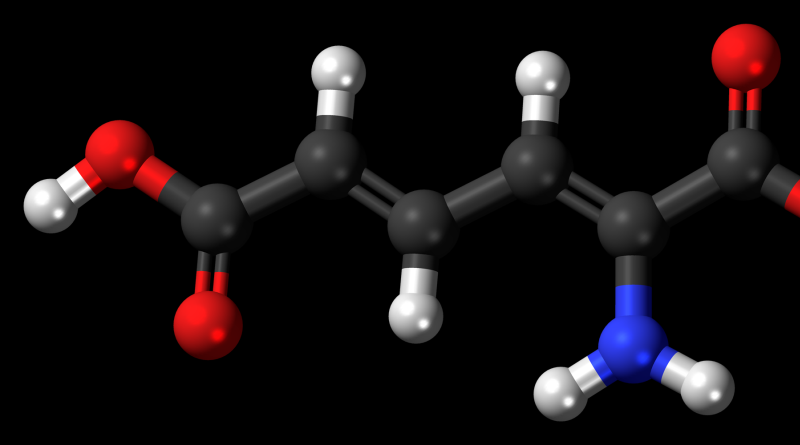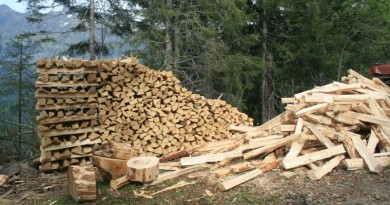Atom
Atom is the fundamental building unit of the each substance, withal also the smallest unit of the substance that has typical characteristics of chemical element. Every atom has three structural particles: protons, neutrons and electrons. Protons have positive electrical charge and are found in the atomic nucleus along with neutrons that have no electrical charge, but are the same size as the protons. Protons and neutrons are mutually called nucleons. Outside the nucleus of an atom are circling electrons which are negatively charged particles that form an electron cloud. In its normal state atom has the same numbers of protons as electrons. Electron has a mass 1836 times less than that of the proton or neutron, so it’s often neglected in calculations.

All atoms regardless of numbers of its protons or electrons have almost the exact diameter and that is about 10-10 meters. Nucleus of atoms have diameter about 1 – 10 x 10-15 meters. When you look at this numbers, it’s easy to see that vast majority of every atom is in fact nothing but empty space.
Between all of these electrically charged particles Coulomb (electrostatic) force is always present. The name was given in honor of French physicist Charles Augustine Coulomb (1736 – 1806), who first discovered that the magnitude of the force F is proportional to the product of the two charges, q1 and q2, divided by the square of the distance r between them, or F=k*q1*q2/r2, where k is a constant that depends on the measurement system being used which in vacuum equals 1. The electric force can be one of repulsion, such as the force between two objects having like charges, or it can be attractive, such as the force between two objects having opposite charges. In the memory of the great physicist the unit for measuring an electric charge with mark C was also named after him, and it is equal to the quantity of electricity conveyed in one second by a current of one ampere(C = As).
Coulomb force is the major force when describing interactivity and mutual functionality of the nucleus and electron cloud. Every electron has negative charge of 1.6 * 10-19 C, and every proton has positive charge of exactly the same 1.6 * 10-19 C, so nucleus and electron cloud are attracting each other according to the Coulomb Force. When atom gains or losses electron, it becomes electrically charged particle called ion. Atom which has more protons than electrons has positive charge and it’s called cation (it indicates for example Na+). Anion is an atom which has more electrons than the protons and therefore has negative charge (for example Cl-).
Atom is the fundamental building unit of the each substance.
Electrons in atom could have only specific energetic conditions, all described with series of quantum numbers which determine average distance between electrons to the nucleus, intensity and rotation way, and the electrons rotation way around its proper axis (spin). When an electron is changing its energetic state, light of specific color occurs or absorbs. Electrons are located in seven shells around the nucleus and maximal number of electrons in each shell is limited on 2n2, where n is serial number of shell. External shell isn’t always filled: sodium has two electrons in first shell, eight in second, and only one electron in third shell. Because of the Heisenberg’s maxim of ambiguity it isn’t possible to determine position and speed of electron, both in the same time, and therefore electron cloud can be only statically described. According to that electron’s orbits are just probability dispensations of such random movement.
When describing a nucleus of an atom, three out of four basic forces in the universe have very significant meaning: strong nuclear force, weak nuclear force and Coulomb force (gravity when describing atom could be negligible). Strong nuclear force is the force which exists between the two nucleons, keeping nucleus solid despite repulsion force of the positively charged protons. Weak nuclear force backs up some forms of the radioactivity and the interaction between particles in atom. Nuclear forces are called nuclear because they act on the level of the core of an atom (nucleus), which means that range of this forces is extremely small. On very short distances strong nuclear force overpowers Coulomb force, but on distances longer than 2.5fm Coulomb force is starting to overcome. Because of this effect strong nuclear force keeps nucleus in the middle, and Coulomb force keeps electrons on courses around the nucleus.
Two most significant numbers when describing each atom are the atomic number and the relative atomic mass. Atomic or proton number is the number of protons in the nucleus and has the sign Z. Serial number of element in periodic table of elements is atomic number. Atomic number is marked as left subscript (2He). Relative atomic mass of each element is proportion of average mass of element’s atom and 1/12 of the mass of atom nuclide 12C, which by definition has atomic weight 12. It is marked like left superscript (12C), and his letter’s mark is A. Number of neutrons in nucleus is marked with letter N and is often called Neutron number of an atom. If relative atomic mass is rounded off to be a whole number, then this number is the sum of protons and neutrons in atom’s nucleus ( A=Z+N).
Atoms which are having same number of protons (atomic number), and different number of neutrons (meaning different relative atomic mass) are called isotopes. Isotopes of the same element have the exact chemical, but different physical characteristics. Periodic table of elements takes as relative atomic mass of each element the most stable isotope of each element.



